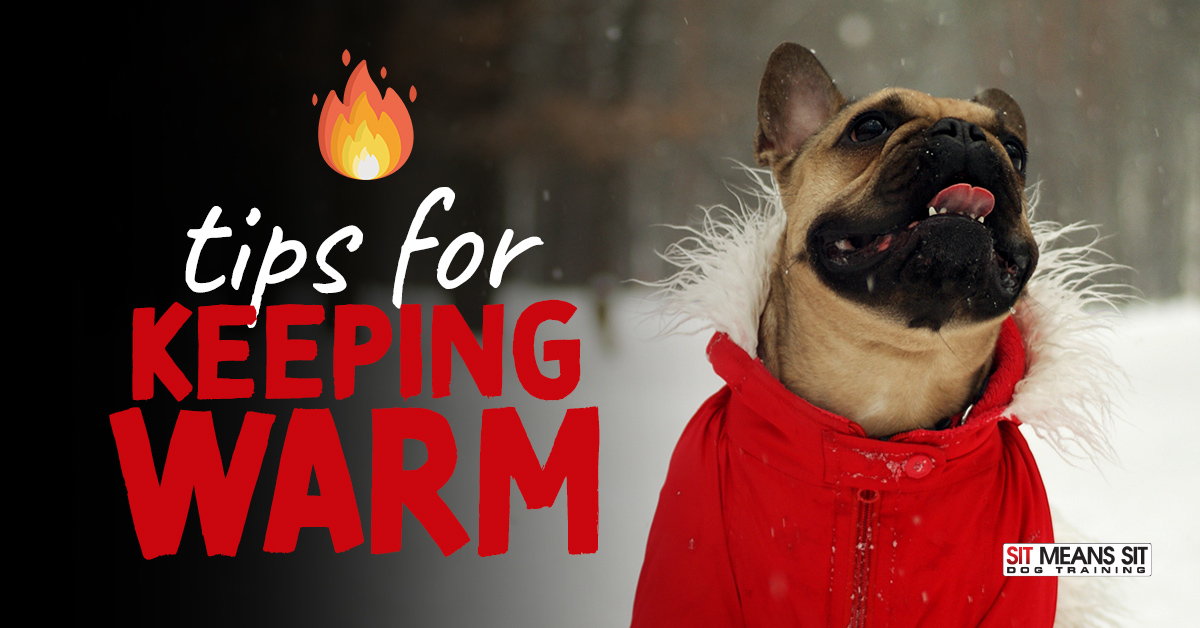
Tips for Keeping Your Dog Warm
Pets are just as likely to suffer from the cold as humans are, including frostbite and hypothermia, even if they have a thick, heavy coat. The following simple measures make it easy to protect your pup from the cold.
Limit Outdoors Time
Even if you have a tough Arctic sled dog with a thick coat, no dogs are meant to spend large amount of time outdoors in the cold. No coats protect all body parts. Ears and noses are exposed to the cold wind; paws are in direct contact with the could ground, particularly cement. K.C. Theisen, director of pet care issues at the Humane Society of the United States, says, “Never leave dogs outside unattended for any length of time. Only take them outside if they’re going to be active and exercise.” Even walks may need to be shortened if it’s cold enough.
Dress Them Warmly
Small dogs, short-haired breeds, puppies, and seniors may need help controlling body heat in the cold. A sweater or coat could go a long way to make your dog more comfortable. Make sure to follow the measurement instructions for each brand and that your dog is comfortable in the apparel, with no attachments or straps rubbing in uncomfortable places. If you think it’s so cold that you need to cover their head, it’s better to just not go outdoors; leave their head bare. Add some extra protein and fat to their diet in the cold months to improve their coat’s health.
Wipe Their Paws
Ice, snow, salt, and toxic chemicals, such as antifreeze and de-icers, can build up on your dog’s feet. If you don’t wipe them down cleanly, they will lick them and could swallow the poisons which could be deadly. The best course of action is to thoroughly wipe down all of their paws every time they come inside. Check for injuries on their paw pads, as ice and snow can cause painful cracks and bleeding. If you know it’s going to be snowy or icy, trim the hair between their toes to prevent buildup.
Don’t Leave Them in the Car
Just as the summer can heat up your car quickly, winter can cool it down just the same. At the very least, it will be uncomfortable for your pet.
Winter Pet-Proof You Home
Dangers in your home change in the wintertime. Space heaters can be knocked over and start a fire or burn a dog. Heated mats could also burn your dog’s skin; a dog bed or blanket should keep them plenty warm inside. Antifreeze can easily be spilled when we are trying to top it off for the winter. Be sure to clean these spills up quickly and store them away from a dog’s nose, as it often smells sweet but can be deadly.
If you need help training your dog to leave certain things alone or finding their place on command, contact our professional dog trainers in Philadelphia for help!
Protect Against the Elements
If you absolutely have to leave your dog outside, be sure to give them a space that is dry, roomy, and out of the wind. The floor should be raised off the ground and sprinkled with straw or cedar shavings. Cover the doorway with canvas or waterproof plastic. Be sure they have plenty of food and water. If it’s so cold that you can fear the water will freeze over, there are heated water bowls you can invest in.
Know the Warning Signs
If you notice any of the following signs, your pet could have hypothermia and should be brought inside immediately, wrapped in a blanket, and vet contacted:
- Whines or acts anxious
- Can’t stop shivering or seems weak
- Has ice on them
- Stops moving or slows down
- Looks for warm places to burrow
Frostbite symptoms take longer to appear, but can easily be noticed if you check your dog every day for changes, such as painful or pale areas.
